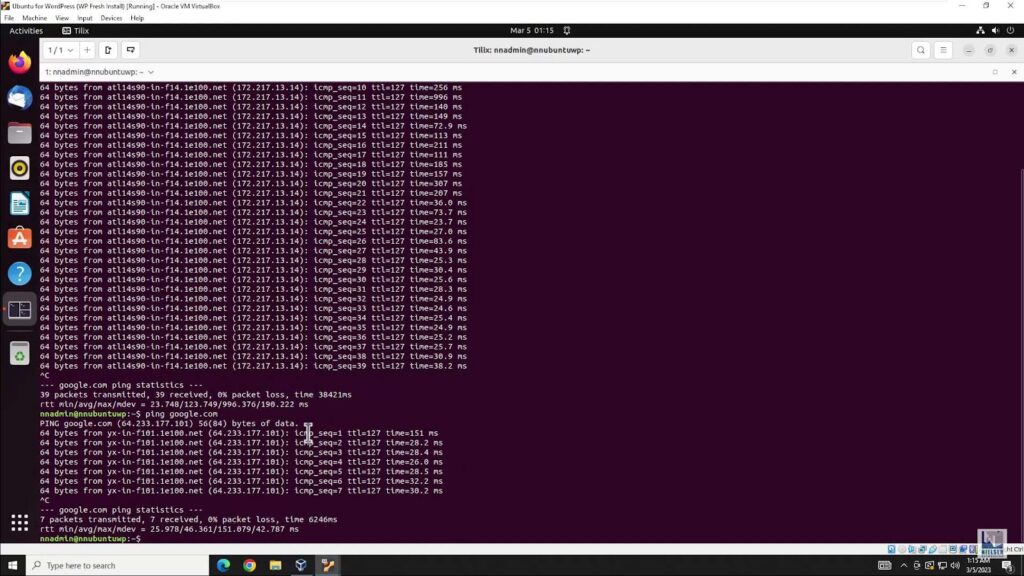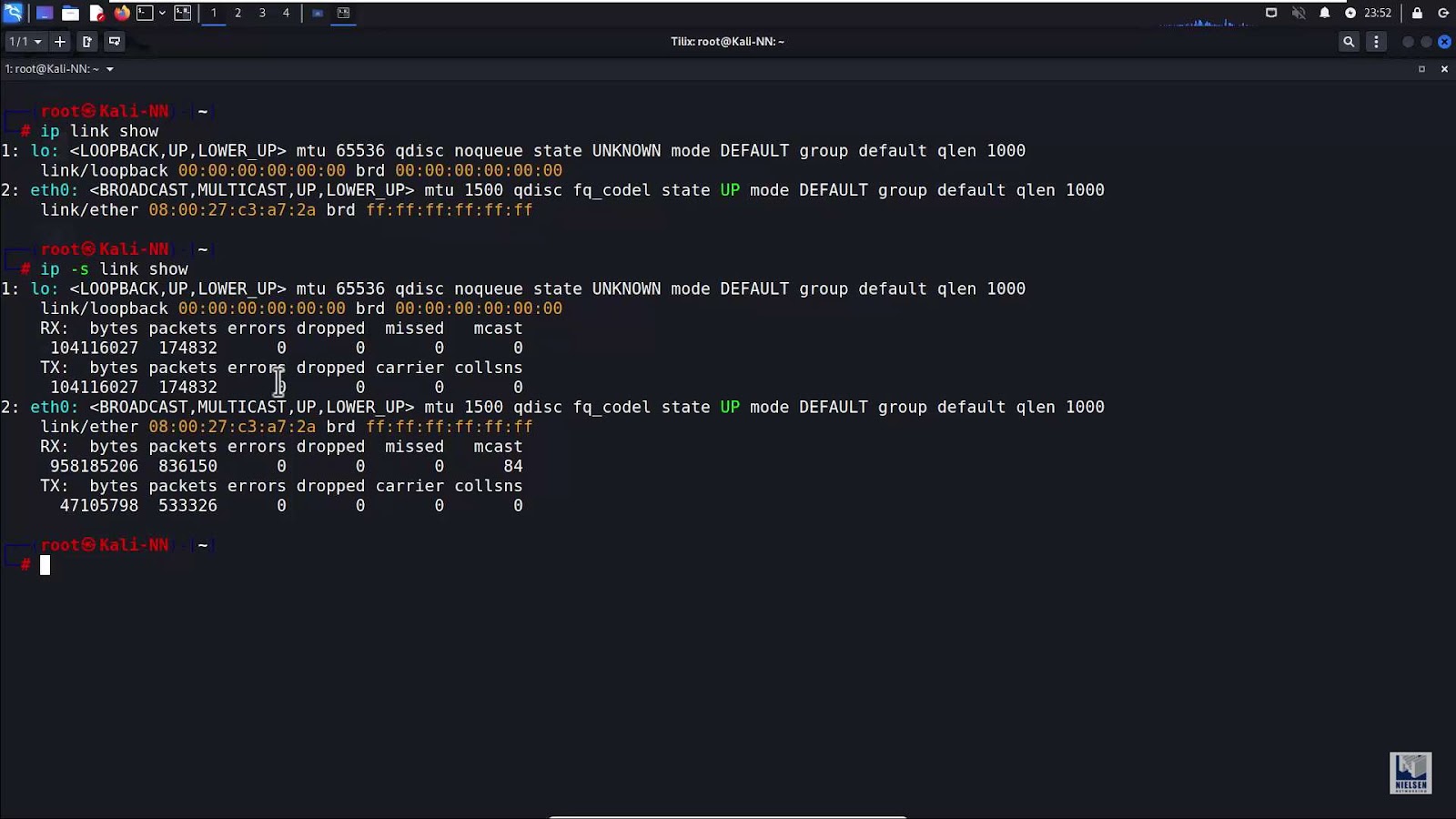Linux stands as a robust and adaptable operating system, boasting extensive utilization across the spectrum, from developers and system administrators to fervent enthusiasts. For those who embark on the Linux journey with minimal prior experience, initiating one’s exploration of the command line interface may appear as a formidable endeavor; however, it is an imperative proficiency to cultivate. Presented below are the paramount ten Linux commands that every neophyte should acquaint themselves with:
Exploring the ‘ls’ Command: A Guide to Listing Files and Directories
The ‘ls’ command is an essential tool in Unix and Linux systems, offering a simple yet powerful way to display the contents of a directory. This command not only reveals the files and folders present but also, with the right flags, can unveil a wealth of information about these items. Here’s a deeper dive into utilizing the ‘ls’ command effectively:
Basic Usage: By default, ‘ls’ will show all files and directories in the current working directory.
Enhanced Details with ‘-l’: Incorporating the ‘-l’ option transforms the output into a detailed list, presenting vital data like file permissions, ownership, file size, and the last modification date.
Tips for Advanced Use:
- Sorting: Use additional flags like -t (sort by modification time) or -S (sort by file size) for customized sorting;
- Hidden Files: The -a option includes hidden files (those starting with a dot) in the listing;
- Human-Readable Format: Adding -h with -l converts file sizes to a more readable format (e.g., KB, MB).
Utilizing these options can greatly enhance the functionality and utility of the ‘ls’ command, making file management more efficient and informative.
Navigating Directories with the ‘cd’ Command
The ‘cd’ (change directory) command is fundamental for navigating the file system in Unix and Linux environments. It allows users to move between directories, making it easier to manage files and execute commands in different locations. Here are some insights into using ‘cd’ effectively:
Basic Navigation: Simply type cd [path] to move to the specified directory. The path can be absolute (starting from the root) or relative to the current directory.
Quick Tips:
- Home Directory Shortcut: Just cd or cd ~ will take you to your home directory;
- Return to Previous Directory: cd – switches back to the directory you were in before the current one;
- Navigating Upwards: Use cd .. to move up one directory level.
Understanding the pwd Command: Navigating Your File System with Ease
The PWD (Print Working Directory) command serves as an essential navigational tool in command-line environments. It reveals the user’s current directory path, offering clarity on one’s position in the complex hierarchy of the file system. This command is especially useful in scenarios where multiple directories are being managed or navigated simultaneously.
Key Insights and Uses of PWD:
- Verification Tool: Confirm your current directory, especially after executing a series of cd (change directory) commands;
- Scripting Aid: When writing scripts, use pwd to ensure that the script operates in the correct directory;
- Troubleshooting: Helps in diagnosing path-related errors in various applications or scripts.
Usage Tips:
- In complex directory structures, use pwd frequently to avoid losing track of your current location;
- Combine pwd with other commands using command chaining or scripting for efficient directory management.
mkdir Command: Your First Step to Organizational Efficiency
The mkdir (Make Directory) command is a fundamental tool for creating new directories. It allows users to efficiently organize files by grouping them into distinct directories. This command is pivotal in maintaining a tidy and structured file system, especially when managing large volumes of data or projects.
Key Benefits and Applications of mkdir:
- Project Organization: Initiate new projects by creating a dedicated directory for related files;
- Systematic File Management: Structure your files logically by categorizing them into appropriately named directories.
Effective Usage Tips:
- Naming Conventions: Adopt a consistent naming convention for directories to make them easily identifiable;
- Nested Directories: Use mkdir to create multiple levels of directories in one go (e.g., mkdir -p project/subdirectory1/subdirectory2);
- Automation: Integrate mkdir into scripts to automate the creation of standard directory structures for new projects or processes.
Illustrative Example:
To create a directory named “reports” within the current directory:
mkdir reports
This command will establish a new folder titled ‘reports’, streamlining the process of organizing files related to reports.
Utilizing the ‘touch’ Command to Generate Blank Files
The ‘touch’ command in Linux and Unix-like systems is a versatile tool primarily employed for creating new, empty files. It can also update the access and modification times of existing files, but its primary use is for quickly generating blank files.
Step-by-Step Guide:
- Initiate a New File: To create a new, empty file, simply type ‘touch’ followed by the desired filename. For instance, if you want to create a file named ‘example.txt’, you would enter touch example.txt in the terminal;
- Multiple Files Creation: The ‘touch’ command is also capable of creating multiple files at once. Just list the filenames separated by space. For example, touch file1.txt file2.txt file3.txt creates three new files simultaneously.
Useful Tips:
- File Extensions: While using ‘touch’, you can create files with any extension, be it .txt, .docx, .jpg, etc., reflecting the intended file format;
- Checking Creation: After executing the command, use ls to verify that the file(s) have been created in the current directory;
- Scripting Tool: Advanced users often use ‘touch’ in scripts to quickly create necessary files or ensure they exist before performing further operations.
Copying Files and Directories with the ‘cp’ Command
The ‘cp’ command serves as a fundamental tool in Linux and Unix-like systems for copying files and directories from one location to another. It’s an essential command for data management and backup.
Copying Single Files:
- Basic Copy: To copy a file, use cp followed by the source file name and the destination directory. For example, cp source.txt /destination/directory/ copies ‘source.txt’ to the specified directory;
- Verifying Copy: After copying, check the destination directory to ensure the file is successfully copied.
Copying Directories:
- Recursive Copy: To copy an entire directory, including its subdirectories and files, use the -r option. For example, cp -r source_directory/ destination_directory/ duplicates the entire ‘source_directory’ into ‘destination_directory’;
- Preserving Attributes: Use -p with -r to preserve file attributes like modification time and permissions during the copy process.
Additional Tips:
- Overwrite Warning: By default, ‘cp’ will overwrite files in the destination if they have the same name. Use the -i option for an interactive prompt before overwriting;
- Using Wildcards: For copying multiple files of a certain type or pattern, use wildcards. For example, cp *.txt destination_directory/ copies all ‘.txt’ files to the specified destination;
- Backing Up Files: The ‘cp’ command is often used for quick backups. Regularly copying critical files or directories to a backup location can prevent data loss.
The mv Command: A Comprehensive Guide to Moving and Renaming Files and Directories
The mv (move) command is a fundamental tool in various operating systems, designed for relocating and renaming files as well as directories. It operates by specifying a source path, which is the current location of the file or directory, and a destination path, where it will be moved or renamed.
Usage Scenarios:
- Moving Files:
- How to Use: To move a file, input the mv command followed by the file’s current name and the desired destination directory;
- Example: To move old_file.txt to a directory named new_location, the command is: mv old_file.txt new_location/.
- Renaming Files:
- How to Use: Renaming involves using the mv command with the current file name and the new file name as parameters;
- Example: To change current_name.txt to new_name.txt, the command is: mv current_name.txt new_name.txt.
- Tips for Effective Use:
- Confirm Paths: Ensure the destination directory exists to avoid errors;
- Check Permissions: Verify you have the necessary permissions to move or rename the files;
- Use Wildcards: For moving multiple files of a certain type, use wildcards (e.g., *.txt).
Understanding the rm Command: Safely Removing Files and Directories
The rm (remove) command is a powerful tool used to delete files and directories. It is crucial to use this command with caution, as it permanently removes data without placing it in a recycle bin or similar.
Usage Scenarios:
- Deleting Files:
- How to Use: To delete a file, simply use the rm command followed by the file name.
- Example: To delete file.txt, the command is: rm file.txt;
- Removing Directories:
- How to Use: To remove a directory and its contents, use the rm command with the -r (recursive) option;
- Example: To remove a directory named my_folder, the command is: rm -r my_folder/.
- Safety Recommendations and Best Practices:
- Double-Check File Names: Always verify the file or directory name before executing the command;
- Use the -i Option: For a safer approach, use rm -i which prompts for confirmation before each deletion;
- Backup Important Data: Regularly back up vital files and directories to prevent accidental loss;
- Limit Root Access: Avoid using the rm command as a root user unless absolutely necessary, as it can lead to system-wide deletions.
- Advanced Tips:
- Log Deletions: Keep a record of what is being deleted by redirecting the output to a log file;
- Combining Commands: Use rm in combination with other commands like find for more complex file management tasks.
Concatenation and Displaying File Content with the ‘cat’ Command
In the realm of command-line tools, the ‘cat’ (short for concatenate) command stands out for its simplicity and efficiency in handling files. It’s primarily utilized for displaying the contents of files right on your terminal screen. This command becomes particularly handy when you need to quickly view the content of text files without opening an editor.

Key Points and Usage Tips:
- Quick Viewing: Ideal for checking small to medium-sized files. Just type cat filename.txt to see the contents immediately;
- Combining Files: You can merge multiple files into one. For example, cat file1.txt file2.txt > combined.txt merges the contents of file1.txt and file2.txt into combined.txt;
- Appending Content: Easily append data to the end of an existing file using cat >> file.txt;
- Creating Files: Start a new file right from the terminal by typing cat > newfile.txt and entering the content.
Example Command:
cat example.txtText Searching with the ‘grep’ Command
The ‘grep’ command, a staple in text processing, is renowned for its capability to search through one or multiple files for lines containing a match to the given patterns. It’s a versatile tool used in various scenarios, from simple text searches to complex pattern matching with regular expressions.
Features and Advantages:
- Pattern Searching: Efficiently finds text matching specific patterns. The basic syntax is grep ‘pattern’ filename;
- Regular Expressions: Utilizes regular expressions for advanced search capabilities;
- Recursive Search: With the -r or -R option, it can search through all files in a directory and its subdirectories;
- Case Insensitivity: The -i option allows searching without considering case differences;
- Line Number Display: Use -n to display line numbers along with the search results.
Example Command:
grep "specific_text" document.txtThese commands, ‘cat’ and ‘grep’, are fundamental yet powerful, offering a range of functionalities for file content display and text searching within the Unix and Linux command-line environment. Their simplicity and versatility make them essential tools for both beginners and seasoned professionals in the field of computing. Read about the limitless possibilities with Cloud OS Linux – your gateway to a seamless and efficient cloud computing experience!
Conclusion
Here are only a handful of the essential Linux commands that will cross your path as you delve into the world of command-line computing. As your familiarity with these foundational operations deepens, you’ll have the opportunity to delve into more intricate commands and customizable choices, thereby elevating your proficiency in Linux. Achieving mastery in the Linux command line necessitates a commitment to regular practice and a willingness to exercise patience.
